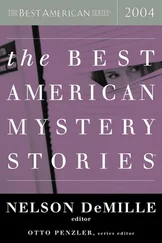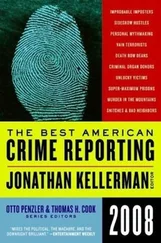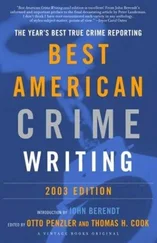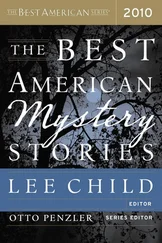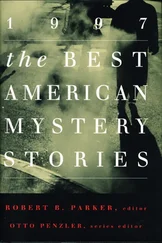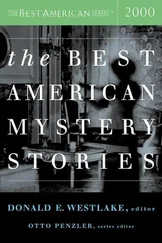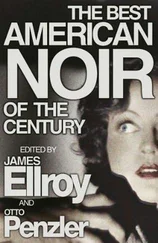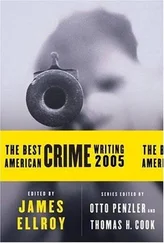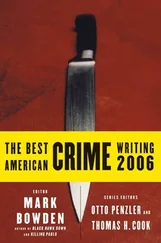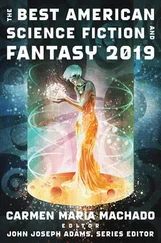CALVIN TRILLIN has been a staff writer for The New Yorker since 1963. For fifteen years, he wrote a New Yorker series called “U.S. Journal”-a three-thousand-word article from somewhere in the United States every three weeks. He is the author of twenty-six books, including Killings and American Stories.
Coda
I was initially attracted to this story by its sheer drama. As the first sentence of my piece says, what happened at the end of John White’s driveway-events that transformed the lives of so many people-happened in less than three minutes. Also, I was curious about the role of race. I’ve been writing about race off and on since the early ’60s, when I spent a year as a newsmagazine reporter covering the civil rights movement in the South. In that time and place, the issues were pretty clear-cut. They were less so in Miller Place, Long Island, nearly half a century later, and, in a way, that made them even more interesting to me.
L. Jon Wertheim: BREAKING THE BANK
FROM Sports Illustrated
WITH FLASHING BLUE LIGHTS illuminating his rearview mirror, Colin Dixon pulled his car to the side of a deserted road. It was around six on the evening of Feb. 21, 2006, and Dixon had just clocked out from his job at the Securitas cash depot in Ton-bridge, England, 30 miles southeast of central London. A purposely nondescript, brown building tucked behind a car repair garage, the depot serves as a regional warehouse of sorts, where cash for the Bank of England is stored and disbursed. Dixon, 52, was the manager.
Now, driving home, he figured he was getting pulled over by an unmarked police car for a routine traffic stop. A tall, athletic-looking man in a police uniform approached. Though it would turn out that the cop was no cop at all-the uniform was fake, the Kent police badge he flashed had been purchased on eBay, and the guy’s face had been distorted with help from a professional makeup artist-Dixon was compliant. He got out of his Nissan sedan and was handcuffed and placed in the back of the other car.
He would later testify that the driver, a second man in uniform, turned and said menacingly, “You will have guessed we are not policemen… Don’t do anything silly and you won’t get hurt.” When Dixon tried to adjust his handcuffs, he says the “officer” who’d apprehended him brandished a pistol and barked, “We’re not f--. This is a nine-millimeter.”
Dixon was blindfolded and transferred to a van, then taken to a remote farm in western Kent. Meanwhile, two other fake cops drove to Dixon’s home in the nearby town of Herne Bay, along with accomplices in a second van. Greeted at the door by Dixon’s wife, Lynn, they explained that her husband had been in a serious traffic accident. They said that Lynn and the couple’s young child needed to accompany them to the hospital. Outside the home, the Dixons were placed in the back of the second van and taken to the farm, where the Dixons were reunited. At once relieved and terrified, they were bound and held at gunpoint. Colin Dixon was ordered to give the plotters information about the depot. “If you cooperate, no one will get hurt. Otherwise,” one abductor warned, “you’ll get a hole in you.”
A group of at least seven men then drove to the Securitas depot, Colin Dixon accompanying a phony police officer in a sedan and his family bound in the back of a large, white Renault truck. By now it was after midnight on the morning of Feb. 22. Surveillance video shows Dixon being buzzed into the depot with an officer beside him. Once inside, the fake cop overpowers the security guard and buzzes in the rest of the robbers wearing ski masks and armed with high-powered weapons, including an AK-47. Dixon told the 14 staffers working the graveyard shift, “They’ve got my family,” and instructed them not to touch the alarms. He proceeded to deactivate the security system and hand over the keys to the vault. The Dixons and the staff were then bound and placed in metal cages normally used for storing cash. The truck can be seen backing up to a loading dock.
The robbers clearly knew their way around the depot-where the doors were located and how they locked-and with good reason. One member of the gang, Ermir Hysenaj, 28, an Albanian immigrant, was the classic inside man. Months earlier, after just a 10-minute job interview, Hysenaj had been hired for roughly $11 an hour to work the evening shift at the depot. It was later revealed that in the weeks before the robbery, he had come to work wearing a small video camera hidden in his belt buckle.
For the next 40 minutes, the gang emptied the vault of its contents, wheeling metal carts filled with cash into the truck. The supply of £10 and £20 notes was so massive that by the time the truck was filled to capacity, it accounted for only one quarter of the money in the vault. Still, the conspirators absconded with a haul of £53 million, or more than $100 million.
If the caper didn’t entail pyrotechnics worthy of, say, the current movie The Bank Job, it seemed to come off remarkably smoothly, at least from the robbers’ perspective. All their discipline and meticulous preparation had paid off. There were no surprises. No one was physically injured, much less ventilated with bullets. No one had triggered the alarms. At around 3 a.m., Dixon’s child was able to slither out of a metal cage and the police were summoned. By then the thieves were back at the farm divvying up the money-a bounty that one British prosecutor would later characterize as “dishonest gain almost beyond the dreams of avarice.”
As investigators worked to crack the case, they began to suspect that the ringleader was Lee Murray, and that he and his pal Lea Rusha were the impostors who had first abducted Colin Dixon. Murray was no stranger to London law enforcement. He spent time in a juvenile detention center as an adolescent and later was tried and acquitted in a serious road-rage incident. Ironically, he’d also been questioned by police after a traffic stop in the area of the Securitas depot the summer before the robbery. But he was a prominent figure in pockets of the sports community as well, a fearsome British cage fighter who’d recently gone the distance against the great Brazilian champion Anderson Silva. Murray lost a decision and was paid the equivalent of a few thousand dollars for that fight. Now, Kent police contended, he was a fugitive in Morocco, luxuriating poolside at a villa in an upscale part of Rabat. Lightning Lee was now worth a small fortune in pounds sterling, they alleged, having just orchestrated the largest cash heist in history.
LEE MURRAY CAME INTO THE WORLD in 1977 with his fists balled, and he never quite seemed to unclench them. The son of a British mother and a Moroccan father-his given name is Lee Lamrani Ibrahim Murray-he grew up poor in public housing in a rough-and-tumble section near London’s East End.
His salvation, such as it was, came through fighting. It wasn’t so much what he did as who he was. By his own reckoning, he was a veteran of hundreds of street fights, lining up his target, transferring his weight and then unloading punches that would seem to detonate on impact. After so many bare-knuckle brawls, he figured, not unreasonably, that he might as well get paid for his violence. He frequented boxing and kickboxing gyms, channeling some of his primal tendencies into mixed martial arts (MMA), the increasingly popular sport that combines the striking of boxing and Muay Thai with the ground game of wrestling and jujitsu. In particular Murray had designs on competing in the Octagon, the eight-sided cage used for bouts in the Ultimate Fighting Championship (UFC), the preeminent MMA league, which is headquartered in the U.S.
Murray recognized that while his standup fighting was exceptional, he was at a loss when a bout went to the ground. That is, he needed to improve his grappling and jujitsu, disciplines predicated less on brute strength and aggression than on technique and smarts. So in the winter of 2000 he packed a duffle bag, flew to the U.S. and made his way to gritty Bettendorf, Iowa. Pat Miletich, a former junior college wrestler and five-time UFC champion, had opened an MMA training gym in Bettendorf a few blocks from the banks of the Mississippi. Aspiring fighters came there from all over the world, making Miletich’s gym to fighters what Florence was to Renaissance painters-though with bloodier canvasses.
Читать дальше

